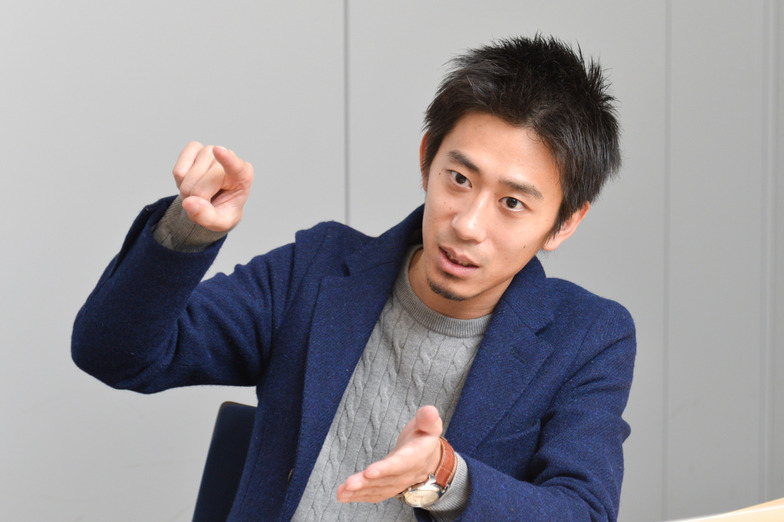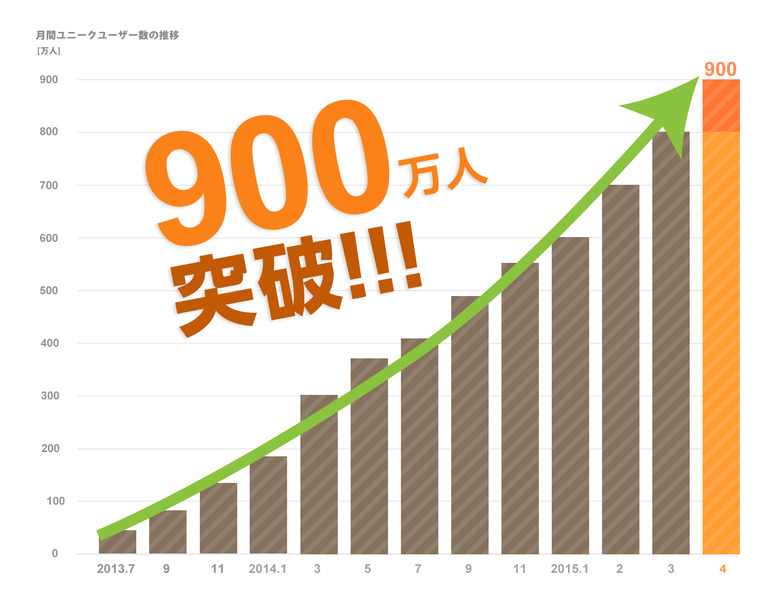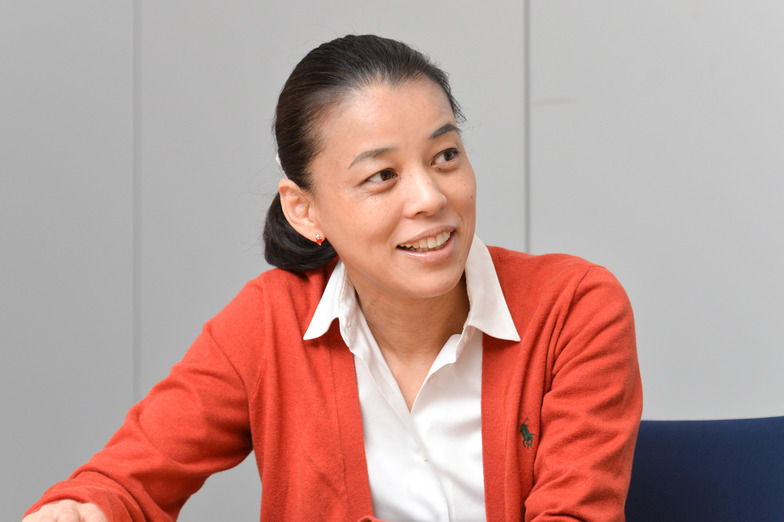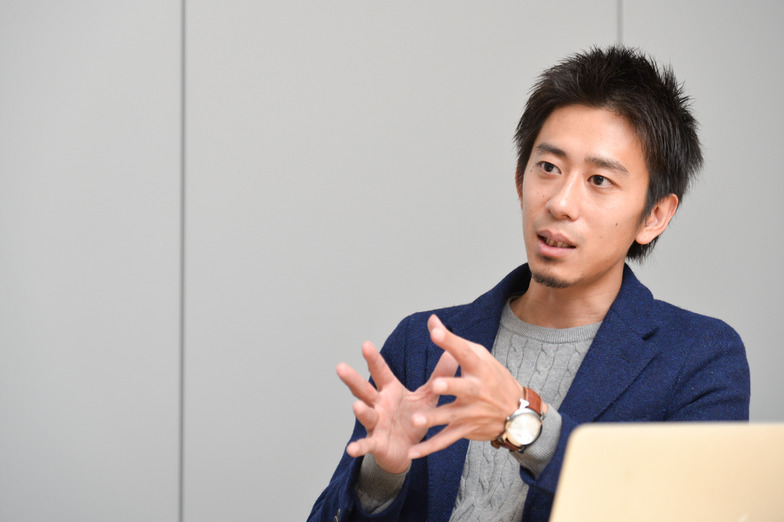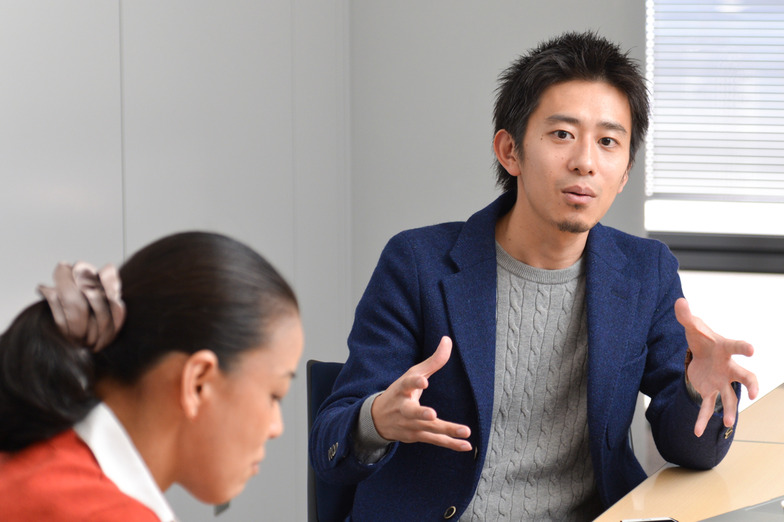Through food, we aim to make people around the world happy—this is the corporate philosophy driving the rapid growth of gourmet site Retty. In this interview, we asked Kazuya Takeda, the president who launched the service, how best to engage with users. In this second part, we delve deeper into the conversation.
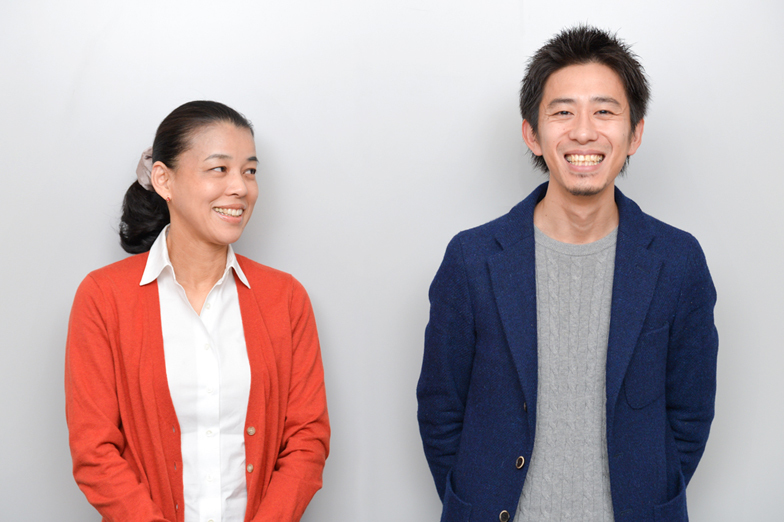
From left: Akiko Gunji (Dentsu Inc.), Kazuya Takeda (Retty)
Gunji:Last time, you mentioned understanding user needs. But since you're running a business, you also have to consider business realities, and you operate while grappling with various conflicts.
Takeda: Everyone naturally thinks from the perspective of the business or provider. But I don't think you can create media unless you fully immerse yourself in the user's perspective. Retty aims to expand its business not just in Japan, but globally. To do that, we're compelled to provide value that resonates across cultural and regional differences. So, "correctly understanding" what users want is incredibly important. But it's really difficult. You won't grasp their needs unless you fully adopt the user's viewpoint. It's a constant cycle.
Gunji: By the way, Takeda-san, what did you do to understand the users' hearts?
Takeda: Of course, I visited various restaurants and tried the food myself. I also met many users at events. Beyond that, I've met people in person to talk with them. There are so many things numbers can't tell you. We see this as one style of media operation in the social era: we're actually good friends with our users. Sometimes they even invite us to drinking parties (laughs). People are always surprised when they hear that, but from that position, we often visit new restaurants with our gourmet heavy users. That's what it means to understand users and become one yourself, I suppose.
Gunji: Well, since Takeda-san and many of you genuinely love eating, you could say you are the users themselves.
Takeda: That's true. Our staff genuinely use Retty as users themselves.
Gunji: Crossing that line between being a user and a provider—maybe that's the key to service delivery in today's world.
Takeda: I think so. Users change constantly as Retty grows. Even if the same users keep coming back, they themselves evolve. They go here, then there—it's been like that for three years, changing every month. "Actually, this way," "Actually, that way." Building an operational structure that can adapt flexibly to that is crucial.
Gunji: How do you actually do that?
Takeda: How should I put it? Our engineers use the service themselves, listen directly to user feedback, and then quickly make fixes or add new features. That's pretty standard for startup development, but the speed is essential.
Gunji: For example, you talk to users you meet at real events, right? If there's an event during the day, is the fix done by night, or does it take until the next day?
Takeda: Sometimes we fix it right there on the spot.
Gunji: I see.
Takeda: Of course, we don't incorporate every single piece of feedback.
Gunji: How do you decide what to implement? How many voices does it take to determine it's a need?
Takeda: It's hard to sum up in one sentence, but it changes depending on the phase. Right now, we can't always change things immediately based on one user's feedback, but we value that input immensely. Also, whether we can personally feel it's important is crucial. If we genuinely agree with even one person's feedback, we assume others feel the same and make the change. Surprisingly, just fixing it first is often the right approach. If it's wrong, we can always revert it later.
Gunji: I see. Fix it first, then revert if needed. That speed and decisiveness is something many companies struggle to achieve. By the way, how many people are on your team?
Takeda: For the first two years or so, it's about five people. Three engineers, a designer, a director—a team of about five people moving at high speed. This would actually be harder with 20 people.
Gunji: Do you all get proper rest?
Takeda: When it was just the initial five, there were times without breaks, but that's not the case now. Also, we don't have the same sense of deadlines that corporate folks do. User needs change daily, so improvements are ongoing, but it's not like we have a deadline forcing us to work late into the night to finish. Instead, we'll say, "Let's go out for some good food tonight," and everyone heads out somewhere.
Why Positive Information Spreads
Gunji: Do negative things ever get posted on Retty?
Takeda: Traditional food sites need to rank places, so they do evaluations. This applies to message boards too—when you write reviews or ratings anonymously, without showing your face, you tend to lean toward harsh criticism. Retty, on the other hand, is built on reviews from people who genuinely want to recommend good restaurants to others. And since it's real-name based, it naturally centers around places people like. If they dislike a place, they simply don't write about it. I think Facebook's system works the same way. When you look at Facebook timelines, people who only post negative things gradually drift away. Since people are putting their real faces to their words, I think the internet is now fundamentally starting to revolve around positive information, and at a rapid pace.
Gunji: So Retty's fundamental purpose, combined with the method of speaking under real names, creates a structure that naturally discourages negativity.
Takeda: Exactly. Since we have such a diverse group of people, problems won't disappear entirely. But ultimately, if we're clear about what our goal is, that behavior will come across properly. Beyond that, the yardstick for what we use as evaluation metrics and the business phase are also important. Something that isn't an issue in our current phase might be different in the next phase. I think it's good to keep in mind that things change like that.
Gunji: Is there a good way to know what phase we're currently in?
Takeda: I think it's about knowing where the goal is. If you think of that goal as the summit of a mountain, you need to be able to see what stage you're at on the way up.
Gunji: Do you measure that by business scale or user numbers? I imagine there are various metrics.
Takeda: That's incredibly difficult. Different phases—for example, Retty's next phase is going public. Since there are milestones like that, the phase after going public will be different from where we are now. We need to discern that.
Gunji: So the key is to constantly check both short-term and mid-to-long-term goals as you move forward at each stage.
Learning from Retty: The Future of Content Marketing
Gunji:Last time, you mentioned Retty first connected with people highly interested in food before expanding. How do you now acquire new members and retain existing ones? If you do nothing, people will leave. For corporate membership sites, you might think of offering points, products, or gift campaigns. How does Retty handle this?
Takeda: Ultimately, it comes down to what your goal is. That's really the crux of it. If you just want to promote your own products, regular advertising is probably better. You should operate in a way that aligns with what users want and how to solve the problems they currently face.
Gunji: So it's about defining the goal from the user's perspective and then figuring out how to solve it. It sounds obvious when you put it that way.
Takeda: It's crucial to consider what needs society is demanding right now.
Gunji: Even if the sender sets goals like increasing brand fans or boosting brand loyalty, we must thoroughly consider what value we're actually providing to users beyond that, right?
Takeda: The large corporations and well-known companies Dentsu Inc. works with are much larger players in society compared to us. Their products can meet societal needs or solve problems. So when aiming to increase fans, it's good if user needs align with that.
Gunji: So it's about the value you provide matching the need.
Takeda: For major brand products, the manufacturing process, background, or upcoming new products should naturally attract public interest. I can't say how much of that demand is explicitly recognized, but I suspect there's plenty. So, I believe media focused on communicating that would be viable.
Gunji: For products aimed broadly at consumers, there must be plenty of value that can satisfy user needs.
Takeda: If the need exists and is understood, a solution will inevitably emerge. While the strength of the need and the product's specifics might make it hard to generalize, I believe it can work if you accurately grasp the user's needs.
Gunji: Something I've thought since our previous conversation is that what you're doing, Takeda-san, offers significant insights for us who are constantly experimenting and refining things on the front lines. The relationship between information and users, and the relationship between those providing information/services and users. I believe this remains constant whether you're a large corporation or a startup, a manufacturer or a service provider.
Takeda: You're absolutely right.
Gunji: So, what can we learn from Takeda-san and his team's success?
【Gunji's Eye】
As touched upon in our discussion, I truly felt that Takeda's service holds many lessons and hidden insights for those involved in content marketing. Throughout both parts of our conversation, Takeda repeatedly emphasized "accurately understanding user needs." This is precisely the core of content marketing. The question is how thoroughly one can achieve this understanding. While this is a topic discussed widely, I sensed that the level of commitment demonstrated by those actually practicing it is on an entirely different level, both in speed and substance. Can we grasp "user needs" not just through surveys and data, but as a tangible, real experience, transcending the roles of sender or receiver? Furthermore, can we continuously respond to needs that change rapidly every day? What content marketing truly demands is the "quality" of user understanding. I want to apply what Retty has taught us much more effectively in our future fieldwork.





